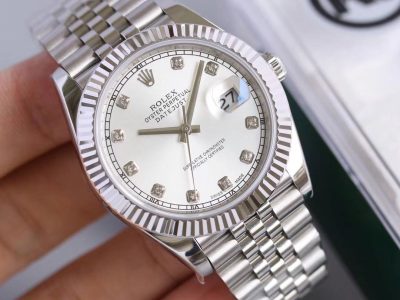How Will The Rolex Turn-O-Graph Work?
The Turn-O-Graph may have been totally stopped in 2011, but this underrated classic actually holds the distinction of being the first Rolex watch to include a rotating bezel on a commercial scale. This particular feature makes the Turn-O-Graph the perfect timepiece for those who prefer this highly functional design element, but don’t need to wear a real dive watch every day. So, how does the Rolex Turn-O-Graph work? 
The first Rolex Turn-O-Graph, introduced in 1953, was the Model 6202, which was the first Rolex replica watch to be made in series with a rotating bezel, as it came out a few months after the Submariner. Like the first Submariner, which appeared later that same year, the replica Rolex Turn-O-Graph 6202 was a time-only watch that did not include a date display; however, all subsequent Turn-O-Graphs were released as part of the Datejust collection and therefore included the mandatory date window at 3 o’clock.
The defining feature of the Rolex Turn-O-Graph is its rotating chronograph bezel, graduated to 60 minutes. This simple and practical feature allows the wearer to use their Turn-O-Graph watch to measure the time that has elapsed. In addition, since only the first and last generation of watches actually bore the “Turn-O-Graph” name on their dials, the easiest way to identify a Datejust Turn-O-Graph from a standard Datejust is to look at its bezel.
The Rolex Turn-O-Graph works like any other three-hand watch with a rotating chronograph bezel, and it can be used to measure the duration of events of up to one hour. Unlike chronographs such as the fake Rolex Daytona, which use a dedicated movement with additional hands to measure elapsed time, the Rolex Turn-O-Graph is driven by a standard three-hand movement and uses a rotating bezel and its 60-minute scale to measure the time elapsed since the beginning of the event.
By aligning the zero marker (usually represented by an inverted triangle) on the bezel of the Rolex Turn-O-Graph with the current position of the minute hand, you can measure the time that has elapsed by referring to the position of the minute hand in relation to the 60-minute scale on the bezel. While this only gives you the closest approximation to the minutes, the convenience of rotating the chronograph bezel makes it a very useful watch feature in everyday life.
